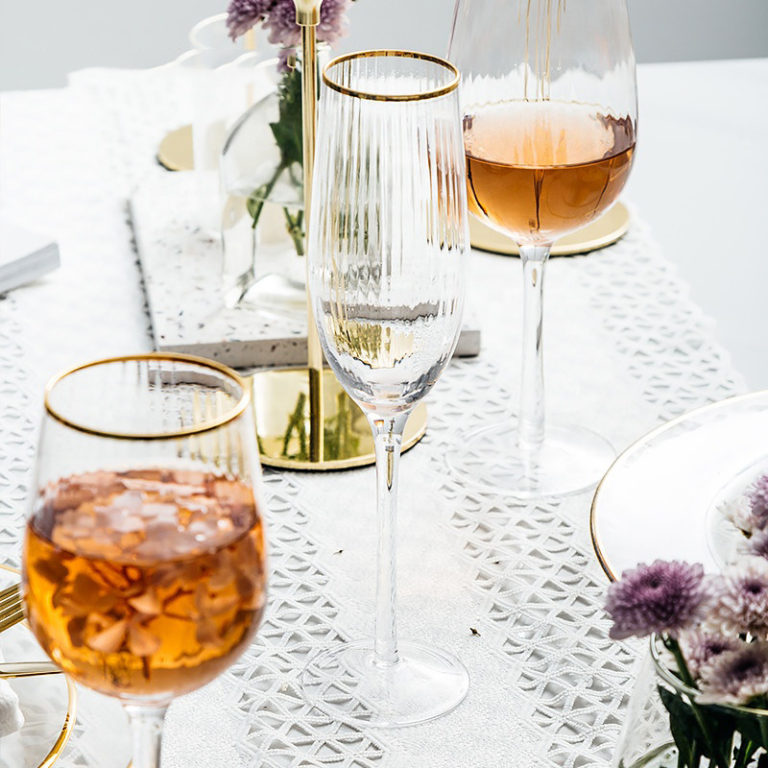
Our champagne glasses collection includes champagne flute, champagne coupe
Our champagne glasses collection includes champagne flute, champagne coupe
Champagne glass is a form of stemware designed specifically to enhance the drinking of champagne. The two most common forms are the flute and coupe. In each the stem allows the drinker to hold the glass without affecting the temperature of the drink, making them readily adaptable to consuming other sparkling wines and certain beers. Champagne can also be drunk from a normal wine glass, which allows better appreciation of the flavor, at the expense of accentuating the bubbles less; this has become increasingly popular since the 2010s.
champagne coupe is a shallow, broad-bowled, saucer shaped stemmed glass generally capable of containing 4 to 8 US fl oz (120 to 240 ml) of liquid. Legend has it the shape of the coupe was modelled on the left breast of the French Queen Marie Antoinette, wife of King Louis XVI of France, but the glass was designed in England over a century earlier especially for sparkling wine and champagne in 1663. The coupe was fashionable in France from its introduction in the 1700s until the 1970s, and in the United States from the 1930s to the 1980s.
The champagne flute (French: flûte à Champagne) is a stem glass with either a tall tapered conical shape or elongated slender bowl, generally holding about 6 to 10 US fl oz (180 to 300 ml) of liquid.
The champagne flute was developed along with other wine stemware in the early 1700s as the preferred shape for sparkling wine as materials for drinking vessels shifted from metal and ceramic to glassware. Initially, the flute was tall, conical, and slender; by the 20th century, preferences changed from a straight-sided glass to one which curved inward slightly near the lip.
This inward taper is designed to retain champagne’s signature carbonation by reducing the surface area for it to escape. Nucleation in a champagne glass helps form the wine’s bubbles; too much surface area allows carbonation to fizzle out quickly. More bubbles create greater texture in the taster’s mouth, and a flute’s deep bowl allows for greater visual effect of bubbles rising to the top. The flute’s narrow cross-section also minimizes the oxygen-to-wine ratio, which enhances both the wine’s aroma and taste.
While most commonly used for sparkling wines, flutes are also used for certain beers, especially fruit beers and Belgian lambics and gueuzes. The flute shows off the beer’s color, and helps gather the aroma for the nose. The champagne flute is distinguished from the pilsner glass, which lacks a stem.